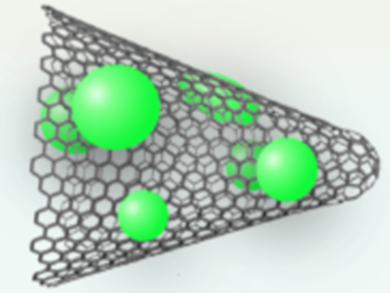Indocyanine green (ICG) is an effective near-infrared (NIR) light absorber for photodynamic therapy (PDT). PDT can be used to treat a range of diseases, including skin conditions and some cancers. ICG has been approved by the Food and Drug Administration (FDA) in the United States in 1959. However, the use of ICG has been hampered by its fast degradation and poor photostability in water.
Xing-Can Shen, Guangxi Normal University, China, and colleagues have stabilized ICG by binding it to the surface of single-walled carbon nanohorns (SWNHs, pictured). SWNHs were added to an aqueous solution of ICG and the mixture was sonicated for 3 h. The resulting SWNH‐ICG nanohybrids were isolated using centrifugation. In the product, the dye is bound to the SWNHs through π-π stacking interactions.
The prepared nanohybrids show high solubility and stability in water. The SWNH carriers significantly improve the photostability of ICG. The team attributes this effect to the excellent NIR light absorption capacity of SWNHs, which prevents the adsorbed ICG from being degraded. The nanohybrids show efficient therapeutic effects even under low-power NIR light. When irradiated, they produce heat and reactive oxygen species, which can both kill cancer cells. According to the researchers, SWNH-ICG nanohybrids are promising for the development of a new generation of cancer treatment systems.
- Near-Infrared Light Responsive Imaging-Guided Photothermal and Photodynamic Synergistic Therapy Nanoplatform Based on Carbon Nanohorns for Efficient Cancer Treatment,
Cunji Gao, Pei Dong, Zhaoxing Lin, Xiaolu Guo, Bang-Ping Jiang, Shichen Ji, Hong Liang, Xing-Can Shen,
Chem. Eur. J. 2018.
https://doi.org/10.1002/chem.201802611




